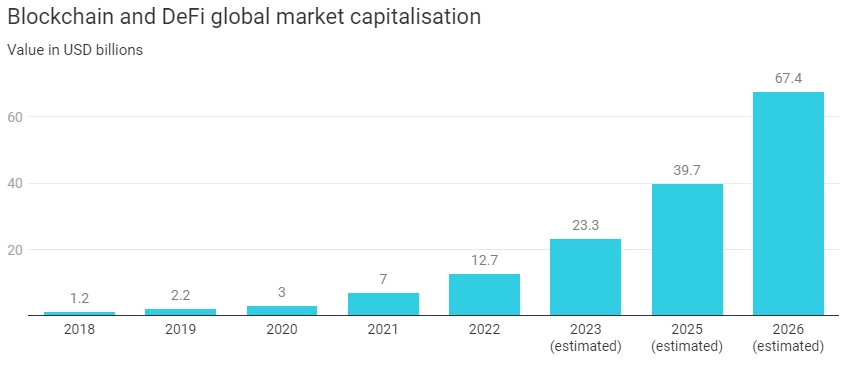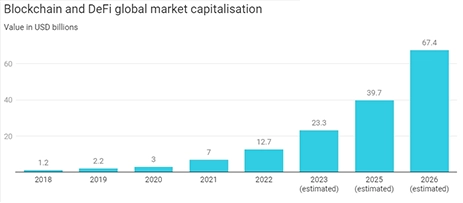Is Ethereum Dead in 2023? Not at all
- November 17, 2023


Despite Ethereum’s transition from a Proof-of-Work to a Proof-of-Stake model, miners have been led to alternatives like Ethereum Classic (ETC). Nonetheless, Ethereum’s robust presence in the crypto world has remained steadfast and influential in recent years. But in the ever-evolving world of cryptocurrencies, the question “Is Ethereum dead?” resonates loudly in 2023. As crypto enthusiasts and investors keenly observe the market, Ethereum’s journey demands a nuanced analysis. This crypto titan, a forerunner since its inception, now faces transformative challenges and opportunities.
Table of contents
Technological Innovations: Ethereum 2.0 and Beyond
So, is Ethereum dead in 2023? Well, as of November 2023, Ethereum’s roadmap continues to be a beacon of innovation and adaptation in the blockchain world.
Key Technological Innovations in Ethereum 2.0
The transition to Ethereum 2.0, or what was previously known as Eth2, marks a significant shift in Ethereum’s approach to scalability, security, and sustainability.
- Scalability and Efficiency: One of the most anticipated changes is the shift from a Proof of Work (PoW) to a Proof of Stake (PoS) model. This move addresses critical concerns around scalability and environmental sustainability. The PoS model significantly reduces the energy consumption of the network, making Ethereum a more eco-friendly blockchain option.
- Enhanced Security Measures: Ethereum’s security is set to become even more robust, ready to withstand a wide range of potential attacks. This increased security is crucial as the network continues to grow and attract more value in its ecosystem.
- Improved User Experience: The roadmap includes enhancements that will make using Ethereum simpler and safer. This includes more support for smart contract wallets and lightweight nodes, which will streamline the user experience.
Future-Proofing Ethereum
Ethereum’s developers are proactively addressing the challenges of tomorrow, ensuring the network is prepared for future generations. This includes tackling emerging issues such as quantum resistance, which may become more urgent with advancements in quantum computing.
- The Roadmap’s Flexibility : Ethereum’s roadmap is dynamic and subject to change as new technologies emerge and the landscape evolves. This adaptability is one of Ethereum’s core strengths, allowing it to stay at the forefront of blockchain innovation.
- The Role of Community in Ethereum’s Evolution : Ethereum’s roadmap is largely the result of years of work by researchers and developers. However, it’s a community-driven process, with ideas often starting as discussions in forums and evolving into Ethereum Improvement Proposals (EIPs). This community involvement ensures that Ethereum remains responsive to the needs of its users and the broader blockchain community.
The Evolution and Resilience of Ethereum
Ethereum has consistently been a trailblazer in the blockchain domain. As the second-largest cryptocurrency by market capitalization, it remains a formidable force. Looking beyond mere price predictions, Ethereum’s real value lies in its utility. Its role in developing other cryptocurrencies, NFT trading, and running smart contracts and Decentralized Finance (DeFi) applications is unparalleled. Ethereum’s transition away from proof-of-work enhances its scalability and aligns it with Environmental, Social, and Governance (ESG) standards. This alignment makes it a more attractive option for institutional investors.
In a significant development for Ethereum and the broader cryptocurrency market, BlackRock, the world’s largest asset manager, has officially filed for a spot Ethereum exchange-traded fund (ETF). This move, reported in November 2023, represents a major endorsement of Ethereum’s potential and viability as an investment asset. BlackRock’s entry into the Ethereum space signifies more than just recognition of the cryptocurrency’s technological prowess. It also serves as a signal to investors about Ethereum’s growing legitimacy and institutional acceptance in the financial world. Is Ethereum dead? Not for BlockRock, the world’s biggest asset manager.
Ethereum's crucial role in Decentralized Finance (DeFi)
Today, more than ever, the Ethereum network fosters innovation and financial empowerment, providing a platform for creating decentralized applications (dApps) and new business models. It offers users and investors access to a diverse ecosystem of DeFi services, enhancing financial inclusivity and diversity.
As of March 2023, Ethereum’s dominance in DeFi remains significant. Ethereum-based protocols account for over 90% of the total value locked (TVL) in DeFi. Ethereum’s blockchain technology has been comprehensively adopted and applied in the sector. This has led to a steady increase in its market dominance, which is now around 20%. This reflects Ethereum’s continued and growing influence in the rapidly expanding DeFi ecosystem. The ecosystem is estimated at $23.3 billion in 2023 and projected to reach US $67.4 billion by 2026, as illustrated by this graph from Finder.


Ethereum’s role in DeFi is irreplaceable because it’s not just a platform; it’s an ecosystem enabler. Its continuous evolution makes Ethereum a fertile ground for DeFi’s growth and innovation. The vibrant community that supports it offers unparalleled opportunities for the future of finance. Does the question “Is Ethereum dead in 2023?” still reason in your mind knowing this?
Ethereum's Integrity Questioned Amidst Controversy
In a startling turn of events, Ethereum’s integrity has been called into question following allegations of corruption and fraud by Steven Nerayoff, an early Ethereum insider. Nerayoff has accused Ethereum co-founder Vitalik Buterin of engaging in fraudulent activities during the platform’s nascent stages. Nerayoff released recordings from 2015, shedding light on Ethereum’s turbulent beginnings. The conversations between Nerayoff and Buterin reveal potential flaws in Ethereum’s financial management and decision-making processes. This scandal underscores the need for transparency in the blockchain industry, where trust is paramount.
These allegations against Buterin, raised by Nerayoff, involve claims of fraudulent ICOs and dubious contributions. Such a revelation, akin to the FTX fiasco, could similarly erode trust and value in Ethereum, echoing FTX’s rapid decline and its broader market impact.
These claims, if proven true, could significantly impact Ethereum’s reputation and future. Could Ethereum overcome this hurdle and maintain its pivotal role in the blockchain ecosystem? Only time will tell, but one thing is certain – the need for ethical leadership and transparent operations in the crypto world has never been more evident. If this happens, we’ll surely be able to give a “yes” to the question “Is Ethereum dead?”.


Frequently asked questions
Ethereum 2.0, with its transition to Proof-of-Stake, has significantly improved scalability and energy efficiency. This upgrade positions Ethereum as a more sustainable and user-friendly blockchain, enhancing its appeal and potential for future growth.
While the allegations raise concerns about governance and transparency, the decentralized nature of Ethereum means its future doesn’t solely hinge on its founders. The community’s response and the resolution of these allegations will be crucial in determining Ethereum’s path forward.
Yes, Ethereum continues to be a major player in DeFi. Its robust ecosystem and ongoing developments suggest that it will maintain, if not strengthen, its position in the DeFi space, despite increasing competition.
Post-Ethereum 2.0, miners need to adapt. They can explore mining cryptocurrencies like ETC, participate in Ethereum’s staking, or engage in other blockchain-related activities. The shift to Proof-of-Stake opens different avenues for involvement in the Ethereum ecosystem.
Conclusion
Ethereum’s roadmap demonstrates its dedication to maintaining a prominent role in the blockchain sector, emphasizing ongoing development and innovation.The transition to Ethereum 2.0 and the continuous improvements beyond it are clear indicators. Ethereum’s journey, marked by innovation and resilience, reflects the ever-changing landscape of digital currencies. As it navigates challenges and seizes new opportunities, Ethereum remains a beacon in the blockchain world, far from being obsolete. Is Ethereum dead in 2023? This statement is for the moment far from reality. Yet, market vigilance is crucial, considering potential concerns regarding the management of the Ethereum ecosystem, which could pose significant risks.
For more news and insights, stay tuned on our social networks X, Discord and Telegram, and make sure to check our Ethereum Classic and Bitcoin mining pools if you are looking for a stable and reliable crypto mining pool.